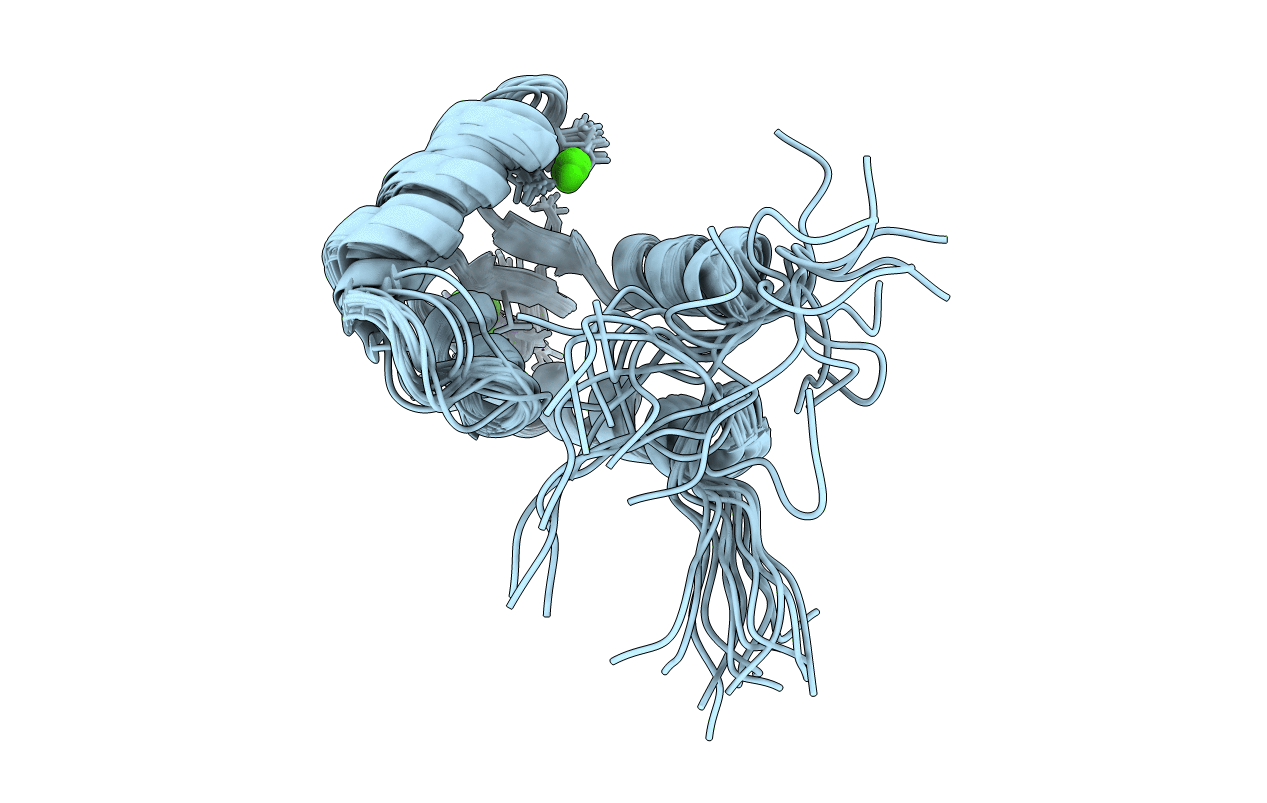
Deposition Date
2011-04-23
Release Date
2011-06-08
Last Version Date
2024-05-01
Entry Detail
PDB ID:
2LC5
Keywords:
Title:
Calmodulin-like Protein from Entamoeba histolytica: Solution Structure and Calcium-Binding Properties of a Partially Folded Protein
Biological Source:
Source Organism:
Entamoeba histolytica (Taxon ID: 294381)
Host Organism:
Method Details:
Experimental Method:
Conformers Calculated:
100
Conformers Submitted:
20
Selection Criteria:
STRUCTURES WITH THE LOWEST ENER


